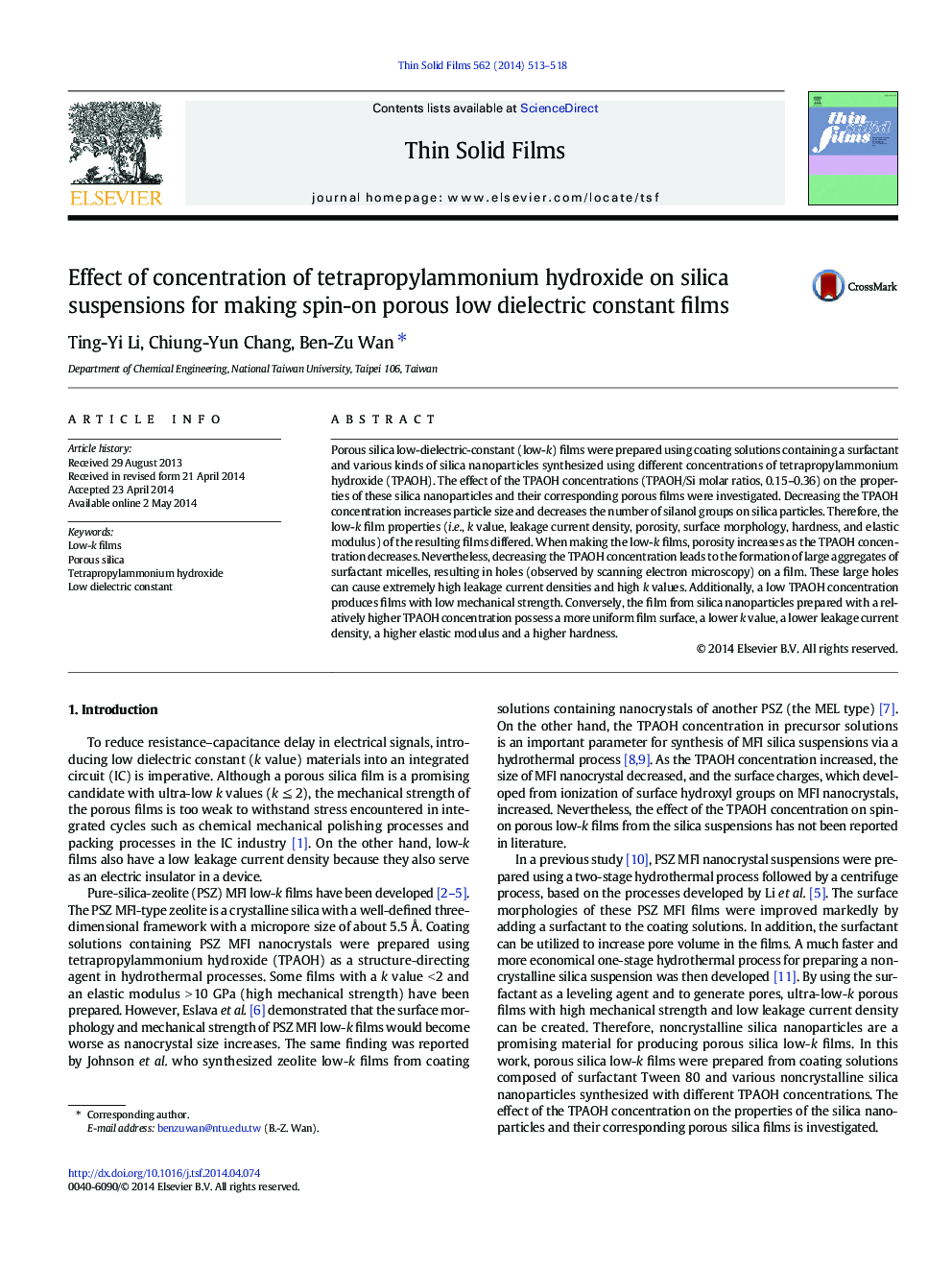| Article ID | Journal | Published Year | Pages | File Type |
|---|---|---|---|---|
| 1665227 | Thin Solid Films | 2014 | 6 Pages |
•Tetrapropylammonium hydroxide (TPAOH)/Si molar ratios are in a range of 0.15–0.36.•Dielectric constant, leakage current, mechanical strength, and morphology of films are examined.•Nano- to micro-scale holes appear on films when TPAOH concentration decreases.•Increasing TPAOH concentration makes films with superior electrical and mechanical properties.
Porous silica low-dielectric-constant (low-k) films were prepared using coating solutions containing a surfactant and various kinds of silica nanoparticles synthesized using different concentrations of tetrapropylammonium hydroxide (TPAOH). The effect of the TPAOH concentrations (TPAOH/Si molar ratios, 0.15–0.36) on the properties of these silica nanoparticles and their corresponding porous films were investigated. Decreasing the TPAOH concentration increases particle size and decreases the number of silanol groups on silica particles. Therefore, the low-k film properties (i.e., k value, leakage current density, porosity, surface morphology, hardness, and elastic modulus) of the resulting films differed. When making the low-k films, porosity increases as the TPAOH concentration decreases. Nevertheless, decreasing the TPAOH concentration leads to the formation of large aggregates of surfactant micelles, resulting in holes (observed by scanning electron microscopy) on a film. These large holes can cause extremely high leakage current densities and high k values. Additionally, a low TPAOH concentration produces films with low mechanical strength. Conversely, the film from silica nanoparticles prepared with a relatively higher TPAOH concentration possess a more uniform film surface, a lower k value, a lower leakage current density, a higher elastic modulus and a higher hardness.
